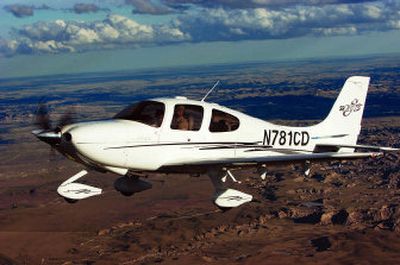N.Y. Yankee pitcher killed in plane crash

NEW YORK – A small airplane carrying New York Yankees pitcher Cory Lidle and his flight instructor slammed into a luxury high-rise on Manhattan’s Upper East Side on Wednesday afternoon, exploding in a fireball that killed both men and engulfed two floors of the building in flames.
Authorities termed the 2:42 p.m. crash an accident, but it evoked emotional reactions from New Yorkers who vividly recall the terror attacks on the World Trade Center a little more than five years ago.
President Bush was alerted to the crash, and Air Force jets were scrambled over several cities as a precaution. Residents of the 50-story, red-brick building were quickly evacuated, streaming down the stairwells into a crowd of emergency crews, drilled for fast response in the aftermath of Sept. 11.
The impact at the 30th and 31st floors caused flaming debris to rain down the north side of the building, known as the Belaire and located at 72nd Street and York Avenue, overlooking the East River.
The bodies of both victims were found on the street, Mayor Michael Bloomberg said in a news conference.
Eleven firefighters were treated for minor injuries. Two people escaped unharmed despite being inside an apartment that was penetrated by parts of the aircraft. The two “were a little bit shaken,” Bloomberg told reporters. “They were sitting there, and they heard a noise, glass breaking, and they ran out the door and into the hall.” He said the plane’s engine was later found in one of the apartments.
Lidle, 34, of West Covina, Calif., had earned his pilot’s license less than a year ago. It was not clear whether he or the as-yet-unidentified instructor was at the controls. The plane was Lidle’s and was identified as a Cirrus SR20, a single-engine, four-seater aircraft made of lightweight composite materials.
The plane is noteworthy for what its manufacturer, Cirrus Design, calls “a final level of defense” – the Cirrus Airframe Parachute System, a parachute for the entire plane. It is not known whether any attempt was made to deploy the parachute before the crash.
The plane had taken off at 2:29 p.m. from Teterboro Airport, about 12 miles away in New Jersey, and had circled the Statue of Liberty before turning north up the East River, Bloomberg said. The afternoon was overcast and threatening but did not give way to rain until after the crash.
Federal Aviation Administration officials said the pilot did not need to radio air traffic controllers in New York because he was flying under what is called VFR, Visual Flight Rules, which don’t require such contact.
An eyewitness identified as Zenel Perezic told CNN that the airplane seemed to be in distress and its engines “sounded as though they were choking” moments before the crash.
Joanne Hartlaub was on a stationary bike in the gym in the building opposite when she saw something falling; it looked like metal, but she couldn’t tell what it was.
“I didn’t see wings. I just saw a big engine.” At that moment, she said, “I was insane with fear that we were being attacked.”
She saw the plane “smash into the side of the building and blow out all the windows. Then all sorts of debris was falling down on the street.”